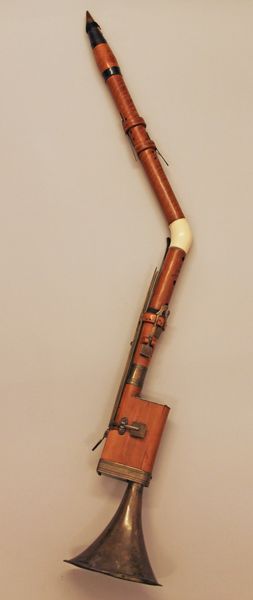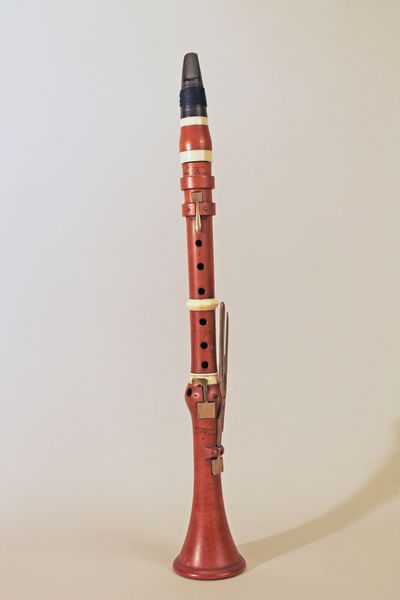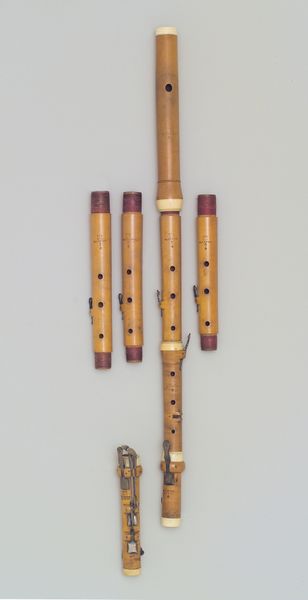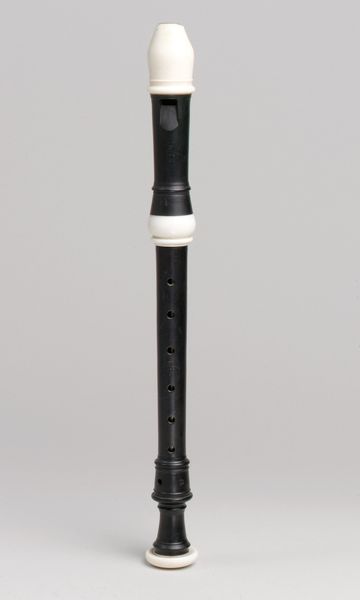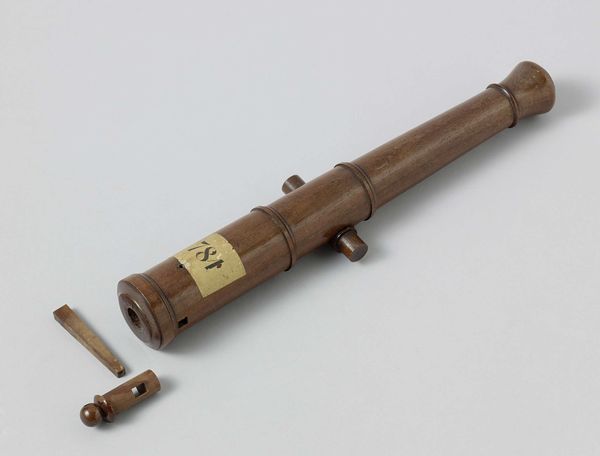
wood
#
wood
#
musical-instrument
Dimensions: Height: 39 5/16 in. (99.8 cm)
Copyright: Public Domain
Curator: Here we have a Basset Horn in F, crafted between 1780 and 1820, likely by Johann Gottlieb Freyer. Editor: It's a striking piece, so elegantly curved. The polished wood and brass give it an air of refinement, like something out of a royal court. Curator: Indeed. The instrument itself has an interesting history. While its precise origins are murky, the late 18th century saw increased use of the Basset Horn in operatic and orchestral works, notably by Mozart. Its design often involved multiple sections connected by joints, as seen here. Editor: It makes you wonder about the musicians who played this, what sort of social circles they moved in, and the musical performances during its period. Was the instrument accessible for people of all genders? Curator: The question of accessibility is key. Instruments like this, especially in the late 1700s, would have often been associated with professional musicians and aristocratic circles, although that doesn't preclude a more diverse history of performance that remains unrecorded. Editor: I can picture this thing singing with its deep notes—the look is really like a quiet rebellion in its twisted figure. This wood instrument really must have witnessed stories during performances. Curator: Exactly. The Basset Horn was prized for its melancholic tone, fitting with the period’s Romantic leanings. It fulfilled specific timbral roles. Moreover, in a society with rising musical venues, such pieces are witness of increasing demand for orchestral diversity to cater audience tastes. Editor: Well, I can't help thinking about the socio-political power and aesthetic taste. Music making was still considered "man's world," thus Basset Horn could still be biased toward performance opportunities. Curator: That is crucial lens to have as we listen to such a historic sound instrument, which has often been sidelined. It prompts crucial reflections. Editor: Ultimately, examining objects like the Basset Horn from intersectional, artistic perspectives reminds us of the complexities involved in constructing historical narratives. Curator: Absolutely, reminding us that the past isn’t simply what’s presented in archives, it requires engaging with theory and acknowledging gaps in records.
Comments
No comments
Be the first to comment and join the conversation on the ultimate creative platform.
